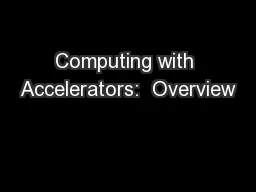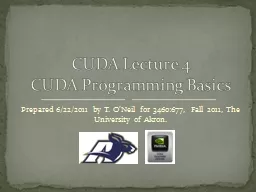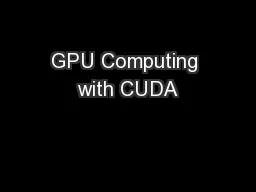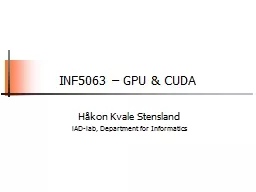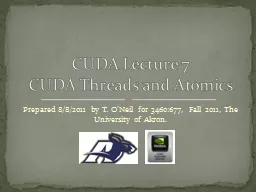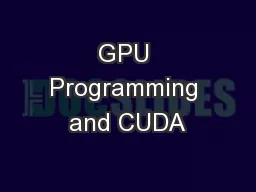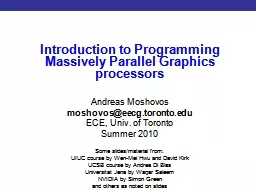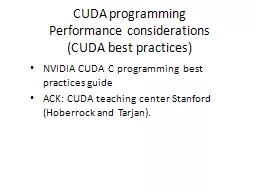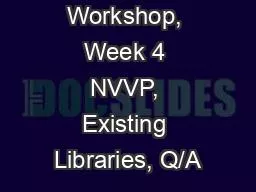PPT-Introduction to CUDA
Author : alexa-scheidler | Published Date : 2015-09-22
heterogeneous programming Katia Oleinik koleinikbuedu Scientific Computing and Visualization Boston University Architecture NVIDIA Tesla M2070 Core clock 115GHz
Presentation Embed Code
Download Presentation
Download Presentation The PPT/PDF document "Introduction to CUDA" is the property of its rightful owner. Permission is granted to download and print the materials on this website for personal, non-commercial use only, and to display it on your personal computer provided you do not modify the materials and that you retain all copyright notices contained in the materials. By downloading content from our website, you accept the terms of this agreement.
Introduction to CUDA: Transcript
Download Rules Of Document
"Introduction to CUDA"The content belongs to its owner. You may download and print it for personal use, without modification, and keep all copyright notices. By downloading, you agree to these terms.
Related Documents


